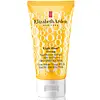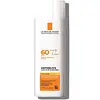What's inside
What's inside
 Key Ingredients
Key Ingredients

 Benefits
Benefits

 Concerns
Concerns

 Ingredients Side-by-side
Ingredients Side-by-side

Zinc Oxide 11.62%
Cosmetic ColorantEthylhexyl Methoxycinnamate 7.4%
UV AbsorberEthylhexyl Salicylate 5%
UV AbsorberWater
Skin ConditioningC12-15 Alkyl Benzoate
AntimicrobialIsodecyl Neopentanoate
EmollientNeopentyl Glycol Diheptanoate
EmollientMagnesium Aluminum Silicate
AbsorbentGlyceryl Stearate
EmollientPEG-100 Stearate
Caprylyl Glycol
EmollientArachidyl Alcohol
EmollientPolyhydroxystearic Acid
EmulsifyingArachidyl Glucoside
EmulsifyingTriethoxycaprylylsilane
Behenyl Alcohol
EmollientXanthan Gum
EmulsifyingBHT
AntioxidantDisodium EDTA
Parfum
MaskingCitral
PerfumingCitronellol
PerfumingGeraniol
PerfumingLimonene
PerfumingLinalool
PerfumingMethylparaben
PreservativePhenoxyethanol
PreservativeIsoamyl P-Methoxycinnamate
UV AbsorberDiethylamino Hydroxybenzoyl Hexyl Benzoate
UV FilterCyclopentasiloxane
EmollientSilica
AbrasiveMethylene Bis-Benzotriazolyl Tetramethylbutylphenol
UV FilterPotassium Cetyl Phosphate
EmulsifyingDicaprylyl Carbonate
EmollientDibutyl Adipate
EmollientBis-Ethylhexyloxyphenol Methoxyphenyl Triazine
Skin ConditioningEthylhexyl Triazone
UV AbsorberCetyl Dimethicone
EmollientTriethylhexanoin
MaskingGlycerin
HumectantAcrylates Copolymer
Oryza Sativa
Biosaccharide Gum-4
Skin ConditioningButylene Glycol
HumectantCetyl Alcohol
EmollientCyclohexasiloxane
EmollientDecyl Glucoside
CleansingDimethicone Crosspolymer
Emulsion StabilisingEthylhexylglycerin
Skin ConditioningHydrogenated Palm Glycerides Citrate
EmollientHydrolyzed Soy Protein
HumectantHydrolyzed Wheat Protein
Skin ConditioningPhenylpropanol
MaskingPropylene Glycol
HumectantSchizophyllan
HumectantSodium Polyacrylate
AbsorbentSorbitan Stearate
EmulsifyingTocopherol
AntioxidantTocopheryl Acetate
AntioxidantTriethanolamine
BufferingTripeptide-1
Skin ConditioningBenzyl Alcohol
PerfumingEthylparaben
PreservativeO-Cymen-5-Ol
AntimicrobialPropylparaben
PreservativeZinc Oxide 11.62%, Ethylhexyl Methoxycinnamate 7.4%, Ethylhexyl Salicylate 5%, Water, C12-15 Alkyl Benzoate, Isodecyl Neopentanoate, Neopentyl Glycol Diheptanoate, Magnesium Aluminum Silicate, Glyceryl Stearate, PEG-100 Stearate, Caprylyl Glycol, Arachidyl Alcohol, Polyhydroxystearic Acid, Arachidyl Glucoside, Triethoxycaprylylsilane, Behenyl Alcohol, Xanthan Gum, BHT, Disodium EDTA, Parfum, Citral, Citronellol, Geraniol, Limonene, Linalool, Methylparaben, Phenoxyethanol, Isoamyl P-Methoxycinnamate, Diethylamino Hydroxybenzoyl Hexyl Benzoate, Cyclopentasiloxane, Silica, Methylene Bis-Benzotriazolyl Tetramethylbutylphenol, Potassium Cetyl Phosphate, Dicaprylyl Carbonate, Dibutyl Adipate, Bis-Ethylhexyloxyphenol Methoxyphenyl Triazine, Ethylhexyl Triazone, Cetyl Dimethicone, Triethylhexanoin, Glycerin, Acrylates Copolymer, Oryza Sativa, Biosaccharide Gum-4, Butylene Glycol, Cetyl Alcohol, Cyclohexasiloxane, Decyl Glucoside, Dimethicone Crosspolymer, Ethylhexylglycerin, Hydrogenated Palm Glycerides Citrate, Hydrolyzed Soy Protein, Hydrolyzed Wheat Protein, Phenylpropanol, Propylene Glycol, Schizophyllan, Sodium Polyacrylate, Sorbitan Stearate, Tocopherol, Tocopheryl Acetate, Triethanolamine, Tripeptide-1, Benzyl Alcohol, Ethylparaben, O-Cymen-5-Ol, Propylparaben
Butyl Methoxydibenzoylmethane 3%
UV AbsorberHomosalate 10%
Skin ConditioningEthylhexyl Salicylate 5%
UV AbsorberOctocrylene 7%
UV AbsorberWater
Skin ConditioningCyclopentasiloxane
EmollientAlcohol Denat.
AntimicrobialSilica
AbrasiveDicaprylyl Ether
EmollientStyrene/Acrylates Copolymer
PEG-30 Dipolyhydroxystearate
EmulsifyingDimethicone
EmollientCyclohexasiloxane
EmollientPolymethylsilsesquioxane
Nylon-12
Dicaprylyl Carbonate
EmollientDiethylhexyl Syringylidenemalonate
Skin ProtectingPhenoxyethanol
PreservativeLauryl PEG/PPG-18/18 Methicone
Skin ConditioningSodium Chloride
MaskingCaprylyl Glycol
EmollientPEG-8 Laurate
EmulsifyingIsostearyl Alcohol
EmollientPoly C10-30 Alkyl Acrylate
Emulsion StabilisingDisteardimonium Hectorite
StabilisingP-Anisic Acid
MaskingCaprylic/Capric Triglyceride
MaskingDisodium EDTA
Cassia Alata Leaf Extract
AstringentPropylene Carbonate
SolventSodium Dodecylbenzenesulfonate
CleansingTocopherol
AntioxidantButyl Methoxydibenzoylmethane 3%, Homosalate 10%, Ethylhexyl Salicylate 5%, Octocrylene 7%, Water, Cyclopentasiloxane, Alcohol Denat., Silica, Dicaprylyl Ether, Styrene/Acrylates Copolymer, PEG-30 Dipolyhydroxystearate, Dimethicone, Cyclohexasiloxane, Polymethylsilsesquioxane, Nylon-12, Dicaprylyl Carbonate, Diethylhexyl Syringylidenemalonate, Phenoxyethanol, Lauryl PEG/PPG-18/18 Methicone, Sodium Chloride, Caprylyl Glycol, PEG-8 Laurate, Isostearyl Alcohol, Poly C10-30 Alkyl Acrylate, Disteardimonium Hectorite, P-Anisic Acid, Caprylic/Capric Triglyceride, Disodium EDTA, Cassia Alata Leaf Extract, Propylene Carbonate, Sodium Dodecylbenzenesulfonate, Tocopherol
 Reviews
Reviews

Ingredients Explained
These ingredients are found in both products.
Ingredients higher up in an ingredient list are typically present in a larger amount.
Caprylyl Glycol is a humectant and emollient, meaning it attracts and preserves moisture.
It is a common ingredient in many products, especially those designed to hydrate skin. The primary benefits are retaining moisture, skin softening, and promoting a healthy skin barrier.
Though Caprylyl Glycol is an alcohol derived from fatty acids, it is not the kind that can dry out skin.
This ingredient is also used as a preservative to extend the life of products. It has slight antimicrobial properties.
Learn more about Caprylyl GlycolCyclohexasiloxane is a type of silicone more commonly known as D6. It is an emollient and solvent.
Cyclohexasiloxane is used to evenly distribute ingredients throughout the product. When applied to the skin, Cyclohexasiloxane evaporates and leaves behind a silky feel.
As an emollient, it can help the skin feel soft and hydrated. It is also used to reduce frizz in hair products.
Learn more about CyclohexasiloxaneCyclopentasiloxane, or D5, is a silicone used to improve texture of products and trap moisture.
D5 is considered lightweight and volatile. Volatile means it evaporates quickly after application. Once evaporated, D5 leaves a thin barrier that helps keep skin hydrated.
It is also an emollient. Emollients help soften the skin and prevent water loss. Silicones create a silky texture in products. D5 helps other ingredients become more spreadable.
Studies show D5 is safe to use in skincare products. We recommend speaking with a skincare professional if you have concerns.
Learn more about CyclopentasiloxaneDicaprylyl Carbonate comes from carbonic acid and caprylyl alcohol, a fatty alcohol. It is an emollient and gives skin a velvet feel. The sources of Dicaprylyl Carbonate may be synthetic or from animals.
As an emollient, Dicaprylyl Carbonate creates a film on the skin. This film traps moisture in, keeping your skin soft and hydrated.
Disodium EDTA plays a role in making products more stable by aiding other preservatives.
It is a chelating agent, meaning it neutralizes metal ions that may be found in a product.
Disodium EDTA is a salt of edetic acid and is found to be safe in cosmetic ingredients.
Learn more about Disodium EDTAEthylhexyl Salicylate is an organic compound used to block UV rays. It primarily absorbs UVB rays but offers a small amount of UVA protection as well.
Commonly found in sunscreens, Ethylhexyl Salicylate is created from salicylic acid and 2-ethylhexanol. You might know salicylic acid as the effective acne fighter ingredient and BHA.
The ethylhexanol in this ingredient is a fatty alcohol and helps hydrate your skin, similar to oils. It is an emollient, which means it traps moisture into the skin.
According to manufacturers, Ethylhexyl Salicylate absorbs UV wavelength of 295-315 nm, with a peak absorption at 307-310 nm. UVA rays are linked to long term skin damage, such as hyperpigmentation. UVB rays emit more energy and are capable of damaging our DNA. UVB rays cause sunburn.
Learn more about Ethylhexyl SalicylatePhenoxyethanol is a preservative that has germicide, antimicrobial, and aromatic properties. Studies show that phenoxyethanol can prevent microbial growth. By itself, it has a scent that is similar to that of a rose.
It's often used in formulations along with Caprylyl Glycol to preserve the shelf life of products.
Silica, also known as silicon dioxide, is a naturally occurring mineral. It is used as a fine, spherical, and porous powder in cosmetics.
Though it has exfoliant properties, the function of silica varies depending on the product.
The unique structure of silica enhances the spreadability and adds smoothness, making it a great texture enhancer.
It is also used as an active carrier, emulsifier, and mattifier due to its ability to absorb excess oil.
In some products, tiny microneedles called spicules are made from silica or hydrolyzed sponge. When you rub them in, they lightly polish away dead skin layers and enhance the penetration of active ingredients.
Learn more about SilicaTocopherol (also known as Vitamin E) is a common antioxidant used to help protect the skin from free-radicals and strengthen the skin barrier. It's also fat soluble - this means our skin is great at absorbing it.
Vitamin E also helps keep your natural skin lipids healthy. Your lipid skin barrier naturally consists of lipids, ceramides, and fatty acids. Vitamin E offers extra protection for your skin’s lipid barrier, keeping your skin healthy and nourished.
Another benefit is a bit of UV protection. Vitamin E helps reduce the damage caused by UVB rays. (It should not replace your sunscreen). Combining it with Vitamin C can decrease sunburned cells and hyperpigmentation after UV exposure.
You might have noticed Vitamin E + C often paired together. This is because it is great at stabilizing Vitamin C. Using the two together helps increase the effectiveness of both ingredients.
There are often claims that Vitamin E can reduce/prevent scarring, but these claims haven't been confirmed by scientific research.
Learn more about TocopherolWater. It's the most common cosmetic ingredient of all. You'll usually see it at the top of ingredient lists, meaning that it makes up the largest part of the product.
So why is it so popular? Water most often acts as a solvent - this means that it helps dissolve other ingredients into the formulation.
You'll also recognize water as that liquid we all need to stay alive. If you see this, drink a glass of water. Stay hydrated!
Learn more about Water